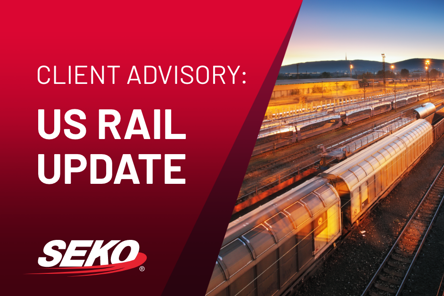WHAT’S THE LATEST
DECEMBER 7 UPDATE
Late last week both the House and Senate passed legislation to avoid a strike by US railroad unions, and on Friday, December 2, President Biden signed into law the bill that creates a contract between rail operators and their unions. This legislation brings to an end the looming strike threat seen this fall.
NOVEMBER 30 UPDATE
In September, following a months-long impasse around new labor contracts and threats to strike, the Biden administration brokered a tentative agreement between U.S. railroad carriers and their workers’ unions. Since then, eight (8) out of the 12 unions voted to ratify the deal. However, four (4) unions, including one of the largest unions (The Sheet Metal, Air, Rail and Transportation Workers “SMART” — Transportation Division union that represents conductors), voted not to ratify the agreement.
This result means the country, customers and consumers once again face a potential strike scenario. Currently, the unions are following an enforced cooling off period, but the four dissenting unions have declared potential strike dates for as soon as next Monday, December 5.
While negotiations continue, on Monday, the Biden administration called for Congress to pass legislation “immediately” to avert a rail shutdown and adopt the September tentative agreement between the railroads and workers’ unions.
As of Wednesday morning, the House passed legislation to avoid a strike. We are continuing to closely monitor the actions of Congress, and the potential lessening of a strike risk.
In the now unlikely event of a strike, Congress will be under pressure to step in quickly and use its legislative power to avoid any long-term work stoppages in the U.S. rail system by setting the terms of an agreement.
WHY IT MATTERS
As with the strike threat earlier this fall, the Association of American Railroads has estimated that the economic cost of a strike would be $2 billion per day. While Congress and the Biden administration appear to be intervening to avoid the strike, SEKO is actively preparing for railroads to start closing rail ramp gates to inbound traffic and other additional actions outlined below, that could take place:
- Ocean carriers potentially unilaterally changing all inland BOL’s to local port BOL’s
- Worsening port congestion
- Truck power and chassis shortage will be exacerbated
- Increased competition for alternative transportation options, including US domestic intermodal, thus putting pressure on truckload capacity
- Surge in pricing for alternative modes of transportation (e.g., airfreight)
Should Congress be unable to pass legislation pre-emptively to avoid a strike, we expect negative effects in passenger rail services, like those seen when Amtrak and several regional transit providers preemptively announced certain cancellations to address potential disruptions from the strike threat earlier this fall.
HOW TO PREPARE
Even with the current lessening of an immediate strike risk, preparedness and establishing contingencies are always critical steps to logistics operations. You don’t want to be behind during a moment of uncertainty, like a nationwide rail strike.
Depending on your needs, and the products being shipped, you should consider the following as part of a well-rounded strike preparedness plan:
- Build excess inventories. Work with your SEKO team to identify warehousing needs for additional inventory
- Work on contingencies with your service provider today!
Options include:
Air Freight: Explore the possibility of sending shipments directly from origin via air freight or utilize domestic air to move shipments to distribution centers inland
Ports Outside U.S.: Route containers through Mexican or Canadian ports. Note that, should a strike occur, this option will become scarce immediately
Secondary Ports in U.S.: Alternatively, route containers through secondary U.S. ports that don’t have rail service or rely heavily on truck movements – these ports include Wilmington, DE; Wilmington, NC; Portland, OR; Port Everett, WA; Port Hueneme, CA; and San Diego, CA among others
Transloading: The SEKO team is alreadyshoring up in-house resources at 16 facilities nationwide to support the increased transload demand. We have 750 chassis and 10 warehouses available to assist in the Port of Los Angeles/Long Beach alone.
LTL and Parcel non-expedite transit modes: Ask your provider if they use intermodal linehaul (commonly used over a weekend) to transit across country. You would want to ensure they are contingent planning to hold on this option until a “no strike” or “no slowdown” is confirmed.
- Be upfront with customers. Let your customers know early and often how delays will impact their deliveries
THE BOTTOM LINE – SEKO IS HERE TO HELP
The best thing to do with uncertainty is to prepare for it. Start planning now to ensure your company is best positioned to react appropriately. SEKO is here to help. If you have questions, please reach out to your SEKO representative, or email us at hello@sekologistics.com.



